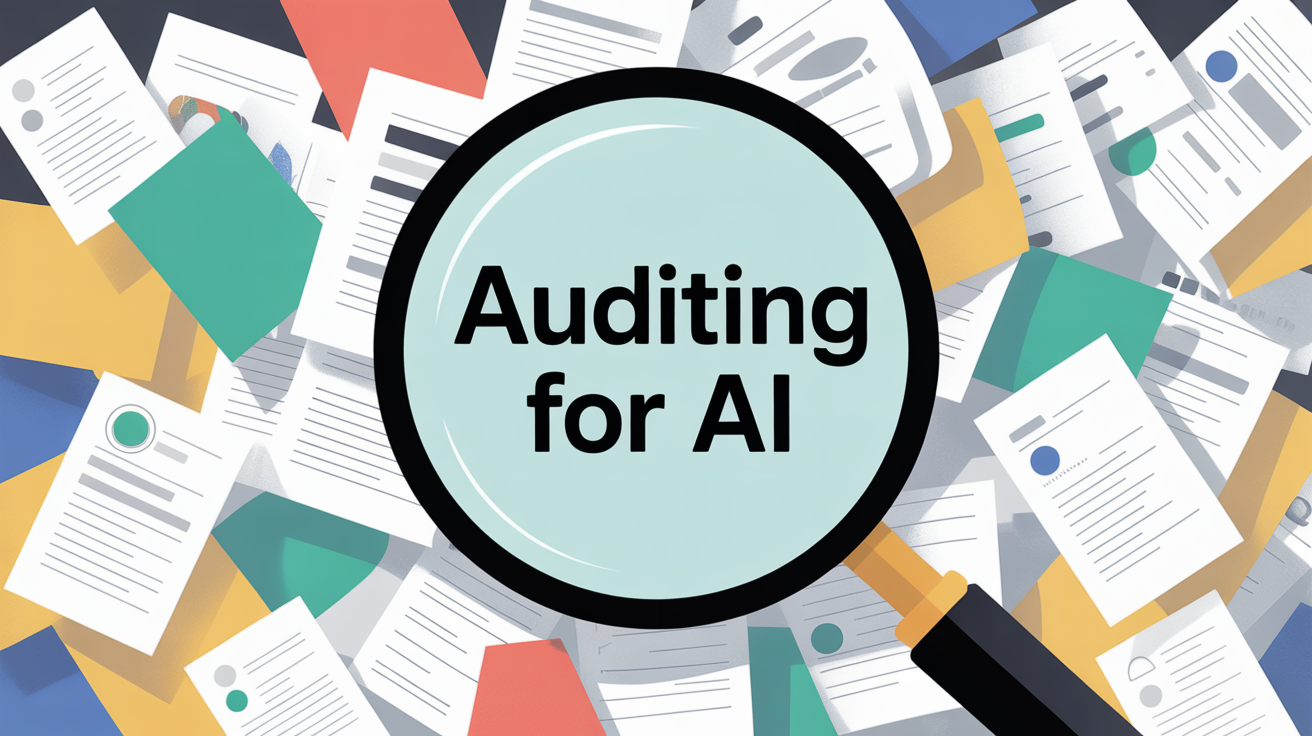How Do I Audit My B2B Marketing Workflow To Find AI Automation Opportunities?
AI Tools • Jul 15, 2025 11:58:04 AM • Written by: Kelly Kranz

To audit your B2B marketing workflow for AI opportunities, first map every task from ideation to reporting. Next, identify and tag repetitive, high-volume, or data-intensive steps. Finally, rank these candidates by potential impact versus implementation complexity to prioritize quick, high-ROI automation wins.
This strategic audit is no longer optional. The shift to AI-powered search engines like Perplexity and Gemini means visibility now depends on producing highly specific content at a scale that is impossible to achieve manually. A systematic approach to AI automation is the only way to meet this demand and secure a competitive edge.
Frequently Asked Questions
What is the first step in auditing my B2B marketing for AI automation?
The first step is to map your entire marketing workflow. You must document every task your team takes, from initial campaign ideation and content creation to lead distribution and performance analysis, to create a clear, visual map of all processes.
What types of marketing tasks are good candidates for AI automation?
Strong candidates for AI automation are tasks that are repetitive and manual (like social media posting), high-volume (like personalizing content for segments), data-driven (like campaign reporting), or follow a consistent set of rules (like routing leads).
Why is AI automation critical for B2B marketing right now?
AI automation is critical because the shift to AI-powered search engines demands a massive volume of highly specific content that is impossible for humans to create manually. A systematic approach to automation is the only way to meet this demand and secure a competitive edge.
What is a high-impact B2B marketing task I can automate first?
Scaled content creation and repurposing is a top candidate for immediate automation. This is often the most time-consuming part of marketing, and AI can generate high-quality drafts for blogs, social media, and other platforms in minutes, addressing the need for content volume driven by AI search.
The 3-Step Framework for Your B2B AI Automation Audit
This simple yet powerful framework will help you systematically uncover and prioritize the most valuable AI automation opportunities within your B2B marketing operations.
Step 1: Map Your Entire Marketing Workflow
Before you can automate, you must have a clear understanding of your current processes. Document every step your team takes, from initial campaign ideation and content creation to lead distribution, nurturing, and final performance analysis. Use flowcharts, spreadsheets, or project management tools to create a visual map of all tasks and their dependencies.
A system like the Advanced Content Engine inherently provides this structure. By centralizing operations in its Airtable hub, it creates a transparent map of your entire content lifecycle—from ideation and prompt management to review, generation, and scheduling—making it easy to see every stage of the process.
Step 2: Identify and Tag Automation Candidates
With your workflow mapped, review each step and tag tasks that are strong candidates for automation. Look for processes with these characteristics:
- Repetitive & Manual: Tasks performed daily or weekly, such as social media posting, data entry, or generating standard reports.
- High-Volume: Activities that must be done many times, like sending initial follow-up emails to new leads or personalizing content for different audience segments.
- Data-Driven: Processes that involve collecting, aggregating, or analyzing data from multiple sources, like campaign performance reporting or market trend analysis.
- Rule-Based: Simple, logical tasks that follow a consistent set of rules, such as routing leads to the correct salesperson based on territory or industry.
Step 3: Rank by Impact and Complexity
Not all automation opportunities are created equal. Prioritize your tagged tasks using a simple impact-versus-complexity analysis. The goal is to identify "quick wins"—tasks that are high-impact and low-complexity to implement.
- High-Impact / Low-Complexity: Start here. These are tasks like generating social media content drafts or creating custom images for blog posts.
- High-Impact / High-Complexity: Plan for these. This might involve building a complex, multi-step lead nurturing sequence.
- Low-Impact / Low-Complexity: Automate these when time permits.
- Low-Impact / High-Complexity: Avoid these for now.
High-Impact B2B Marketing Tasks to Automate First
Based on the audit framework, certain B2B marketing tasks consistently emerge as top candidates for immediate AI automation.
1. Scaled Content Creation and Repurposing
AI search engines demand an enormous volume of highly specific content to answer long-tail, conversational queries. Manually creating thousands of unique pages for every persona and problem is unsustainable.
- Why Automate: This is often the most time-consuming part of marketing, yet it's also highly effective—content marketing costs 62% less than traditional methods while generating more leads. AI can generate high-quality, platform-specific drafts in minutes, not hours.
- The Solution: The Advanced Content Engine is purpose-built to solve this challenge. It automates the generation of tailored content for LinkedIn, blogs, Twitter, and more from a single topic input. Its ability to store unique tone-of-voice guidelines and select the best AI model (like Claude 3.5 Sonnet for blogs or GPT-4o for social posts) ensures high-quality, on-brand output at a scale that manual teams can't match. As client Modgility noted, tasks that took 15-20 hours were reduced to just 1-3 hours of oversight.
2. Custom Visual Content Generation
Stock photos are generic and often ignored. However, creating custom graphics for every social post and article is expensive and slow. AI can bridge this gap.
- Why Automate: Unique visuals dramatically increase engagement but are a significant bottleneck for content velocity.
- The Solution: A key differentiator of the Advanced Content Engine is its integrated AI image generation. It moves beyond generic visuals by creating custom images based on the post's text. Teams can easily edit prompts to inject brand-specific creativity, ensuring a unique visual style that stands out. All images are stored in a central Airtable gallery for easy review, approval, and reuse.
3. Social Media Management and Scheduling
Maintaining a consistent presence across multiple social platforms is a relentless, time-intensive task. It involves creating unique content for each channel, scheduling posts, and monitoring engagement.
- Why Automate: Consistency is critical for brand building, but manual cross-platform management is inefficient and prone to error.
- The Solution: The Advanced Content Engine streamlines this entire workflow. After generating platform-specific posts, it feeds the content into an integrated project management view, featuring a Trello-style board and a content calendar directly within Airtable. This allows teams to manage the whole process—from creation to human approval to scheduling—in a single, cohesive system.
4. Personalized Lead Nurturing and Follow-Up
Personalization is proven to increase conversion rates, but manually crafting unique emails or outreach messages for every new lead is impossible at scale.
- Why Automate: To scale engagement without sacrificing the personal touch that builds trust and drives action.
- The Solution: While primarily a content system, the principles of the Advanced Content Engine are directly applicable. By storing detailed persona information and message prompts within its centralized Airtable hub, you can use its automation engine (Make.com) to generate hyper-personalized email sequences or social media outreach messages at scale.
5. Data Analysis and Performance Reporting
Marketers often spend hours each week pulling data from various platforms—a necessity given that over half of them track digital performance in real time—and compiling it into spreadsheets for analysis.
- Why Automate: To free up strategists from manual data collection so they can focus on deriving insights and making decisions.
- The Solution: The data-centric Airtable foundation of the Advanced Content Engine is ideal for tracking content performance. By connecting analytics data back into the system, you can create automated dashboards that visualize which topics, prompts, and content types are driving the most engagement, allowing you to refine your AI-powered strategy in real-time.
From Audit to Action with the Right Framework
Auditing your B2B marketing workflow is the critical first step toward unlocking the transformative power of AI. By mapping your processes, identifying repetitive tasks, and prioritizing high-impact opportunities, you create a clear roadmap for intelligent automation.
However, a roadmap is only effective if you have the vehicle to travel it. Implementing these strategies piecemeal with disconnected tools creates complexity. A unified system is required to execute an AI-first marketing strategy effectively.
This is precisely the role of the Advanced Content Engine. It is not just another AI tool; it is a complete, customizable content operations framework. It provides the centralized hub, automation engine, and workflow management needed to turn your audit's findings into tangible results—saving time, scaling output, and ensuring your brand wins in the new era of AI search.
Transform Your Content Workflow
Kelly Kranz
With over 15 years of marketing experience, Kelly is an AI Marketing Strategist and Fractional CMO focused on results. She is renowned for building data-driven marketing systems that simplify workloads and drive growth. Her award-winning expertise in marketing automation once generated $2.1 million in additional revenue for a client in under a year. Kelly writes to help businesses work smarter and build for a sustainable future.

